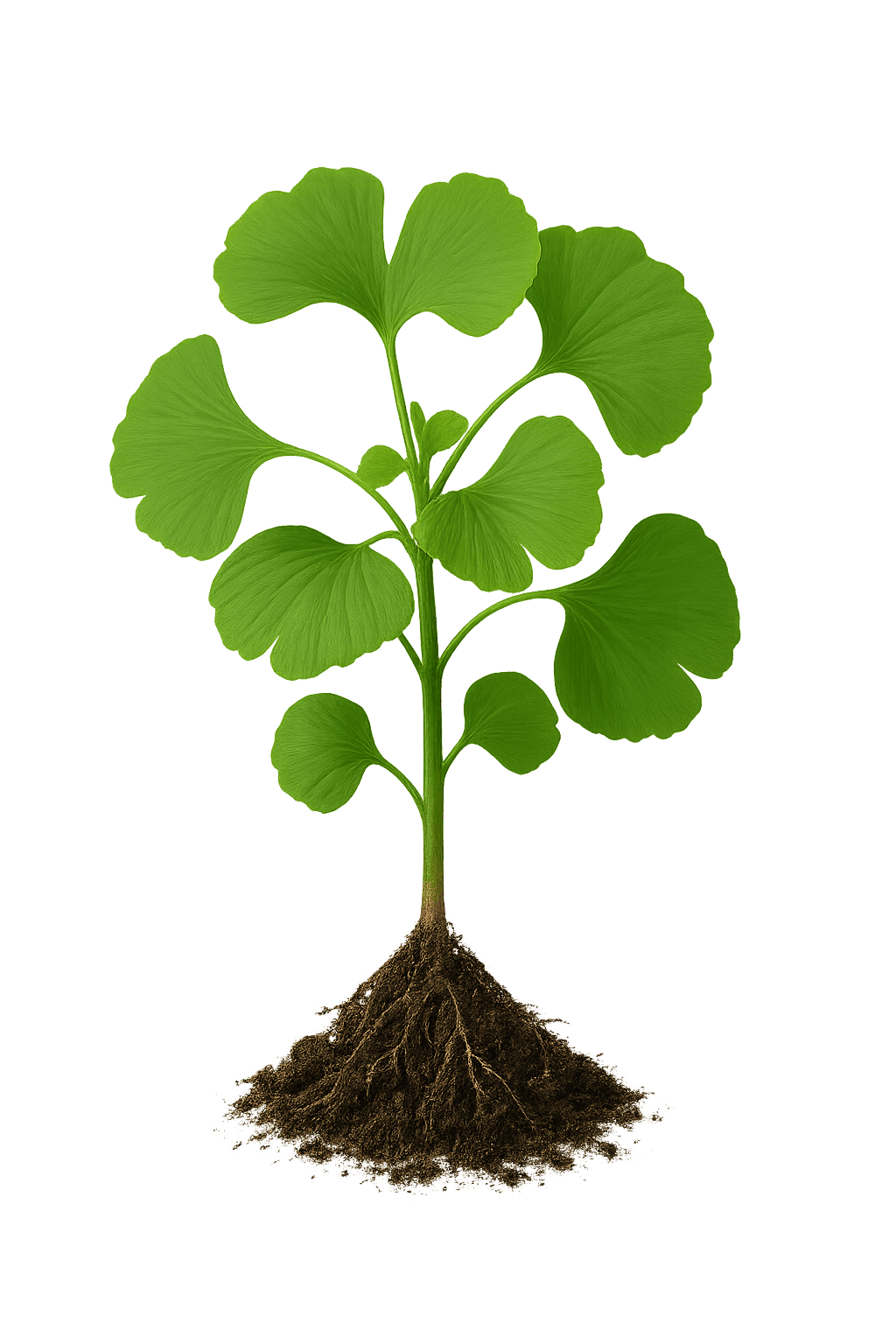Ginkgo
Ginkgo Detailed Encyclopedia
Ginkgo is an ancient medicinal plant with blood-activating, memory-improving, and cardiovascular-protective properties. Known as a living fossil, it is one of the oldest tree species on Earth, widely distributed throughout China, and an important herb in traditional Chinese medicine.

Basic Information
Family:Ginkgoaceae
Scientific Name:Ginkgo biloba
Origin:Distributed throughout China
Harvest Period:Autumn (September-October for seeds, summer for leaves)
Growth Years:20+ years to bear fruit
Plant Height:20-40 meters
Morphological Characteristics
Leaves:Fan-shaped, bilobed, parallel veins, turn golden yellow in autumn
Flowers:Dioecious, male catkins, female solitary, blooming April-May
Roots:Deep taproot system
Stem:Tall trunk, grayish-brown bark, deeply furrowed
Growth Environment
Soil Requirements:Adaptable, prefers deep fertile loam, pH 5.5-7.5
Water Requirements:Drought-tolerant, moderate watering
Light Requirements:Sun-loving, requires full sunlight
Temperature Requirements:15-25°C, cold-tolerant, can withstand -30°C
Humidity Requirements:Relative humidity 50-70%
Classification & Varieties
Main Varieties
Processing Types
💊 Medicinal Value
Nature & Taste:Sweet, bitter, astringent, neutral
Meridian:Enters Lung, Heart meridians
Main Efficacies
- •Improves memory, enhances cognitive function, prevents dementia
- •Activates blood circulation, improves blood flow, protects cardiovascular system
- •Antioxidant and anti-aging, eliminates free radicals, delays aging
- •Relieves asthma and stops cough, treats chronic cough and asthma
- •Nourishes kidney and consolidates essence, treats frequent urination and leucorrhea
Active Ingredients
📖 Usage Methods
Dosage
- •Decoction: Leaves 6-12g, Seeds 5-10g
- •Powder: 1-3g
- •Stew: Seeds cooked with food
- •Tea: Dried leaves steeped in water
⚠️ Contraindications
- •Seeds are slightly toxic, do not eat raw or in excess
- •Use with caution in hemorrhagic diseases
- •Pregnant women use under medical supervision
- •Children should not eat raw seeds
🌱 Cultivation Techniques
Cultivation Points
- •Select sunny location with deep soil
- •Deep tillage, apply organic fertilizer
- •Spring or autumn planting, plant spacing 3-5m
- •Timely pruning, moderate watering and fertilizing
Common Pests & Diseases
Prevention Measures:Strengthen tree management, maintain ventilation
Treatment Methods:Spray bordeaux mixture or carbendazim at early stage
✂️ Harvest & Processing
Harvest Timing:Autumn September-October for seeds, summer June-August for leaves
Harvest Method:Collect fallen seeds, pick green leaves
Processing Methods
- •Fresh leaves: Wash and use directly
- •Dried leaves: Shade-dry to preserve active compounds
- •Ginkgo seeds: Remove outer flesh, dry inner seeds
Storage:Store in cool, dry place, seeds can be refrigerated
🏛️ Cultural Value
History:Ginkgo has existed for over 200 million years, used in Chinese medicine for over 1000 years
Symbolism:Symbolizes longevity, resilience, and hope
Gift Culture:Traditional symbol of longevity and vitality
Modern Research:Modern research confirms cognitive-enhancing, circulatory-improving, and neuroprotective effects
Market Value:Important medicinal material and health supplement, widely used worldwide